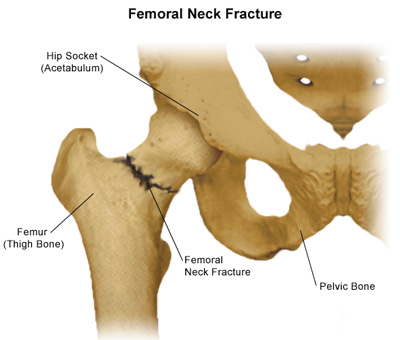Hip Fracture in Older Adults

Hip Fracture in Older Adults- An injury, often preventable, that often results in significant disability or premature death. One in four hip fractures in adults over age 50 results in limited mobility after HEALING; one in four is fatal. Hip FRACTURE becomes a risk with increasing age for a combination of factors that include
- increasing loss of BONE and MUSCLE mass resulting in decreased STRENGTH and unsteady balance
- slowed reflexes and physical reactions
- diminished VISUAL ACUITY
- OSTEOPOROSIS (a condition of thin, weak bones due to loss of BONE DENSITY)
- health conditions such as ALZHEIMER’S DISEASE that impair judgment
- health conditions such as PARKINSON’S DISEASE that impair mobility
- medication side effects such as drowsiness, dizziness, and orthostatic HYPOTENSION (a sudden drop in BLOOD PRESSURE that occurs when rising)
Falls, two thirds of which occur in the home, account for 95 percent of hip fractures. Risks include loose rugs on the floor, uneven or slippery walking surfaces, and objects out of place that become obstacles. Though women are more likely to fracture a hip in a fall, men are more likely to die after hip fracture. Hip fracture has such a poor prognosis because recovery requires extended immobility, which has high risk for complications such as BLOOD clots and PNEUMONIA. Older adults are often reluctant to tell family members or their doctors when they fall for fear of losing independence. Efforts to reduce the risk for falls are the most effective measures for preventing hip fracture. Measures to strengthen bone and muscle, such as daily walking and light RESISTANCE EXERCISE (weightlifting), also help.
See also ACCIDENTAL INJURIES; QUALITY OF LIFE; REFLEX.